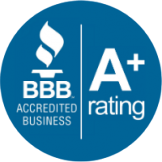East Meadow Roofing: Article About Cool Roofs
The measurement used by the Cool Roof Rating Council to evaluate a roof's tendency to absorb and radiate heat. Solar Reflectance Index, or SRI, is actually a metric of two measurements: how much heat is reflected by the roof and how much heat it emits. The higher the SRI number, the better the roof's cool properties.
East Meadow roofers FAQ: Will a cool roof increase my heating costs in winter?In some cases, a cool roof could keep your home from absorbing the winter sun's heat, leading to a cooler home and higher heating costs. The Cool Roof Rating Council reports, however, that the amount of heat a roof absorbs in the winter is minimal at best. Snow pile-up prevents the sun from reaching local roofs for much of the winter anyway. When compared to the significant cooling costs realized in the summer, the possible slight increase in heating costs is negligible.

Worries about climate change, dependence on fossil fuels and home cooling costs has led to tremendous innovations and advancements in roofing in recent years. As a result of these efforts, homeowners can install cool roofs to escape the heat of summer and begin creating a cool, energy-efficient home.
An experienced East Meadow roofing contractor is a great resource to help you select a cool roof that fits your lifestyle and budget. Here's an overview of how cool roofs work and the options available so that you can discuss these choices more thoroughly with your knowledgeable roofer.
In decades past, most roofs were constructed of darkly colored materials. These dark roofs absorbed the sun's warmth, sometimes reaching 150 degrees in some parts of the country. In most cases, that heat transferred into the home's interior, forcing residents to run their air conditioners and fans longer to counteract the heat. That heat was also radiated back into the atmosphere, creating very hot cities, or heat islands.
Cool roofs counteract those effects in two ways: their lighter colors reflect rather than absorb the heat, and they do not radiate as much heat back out into the atmosphere. A black or very dark roof that reaches 150 degrees in the summer could stay 50 degrees cooler just with a cool roof color. That difference alone can save the homeowner 10 to 30 percent on summer energy costs.
There are other advantages to cool roofs as well. Cool roofs age and deteriorate at a much slower pace than traditional roofs because they don't reach the extremely hot temperatures that degrade them.
Have a question regarding Velux skylights or skylights? Please ask the roofers from Long Island Roofing of East Meadow.
Attics beneath cool roofs typically stay cooler, air conditioning systems last longer and carbon dioxide emissions are reduced.
Cool roofs achieve these effects using a variety of techniques, from cool color shingles to reflective coatings. The list of cool roof products continuously grows, particularly as large cities begin requiring their use on new construction. To help consumers find a cool roof product that fits their home, the Cool Roof Rating Council measures and rates the various roofing products available. A roof's coolness is evaluated by the council for how much heat it reflects and radiates, receiving a numerical rating called the Solar Reflectance Index. The higher the index number, the more cool the roof is.
Just about every roofing material is now available in cool roof options, from affordable asphalt shingles and cool metal roofs to cool colored concrete tiles and shingles in "cool dark colors." Researchers are even working on a special coating for shingles that will reflect heat in the summer and absorb heat in the winter, maximizing the roof's energy efficiency.
With all of these many benefits, cool roofs are the most rapidly growing sector in the roofing industry. They may be right for your home, so check with your trusted local roofer to explore the roofing options that will work best for you.









